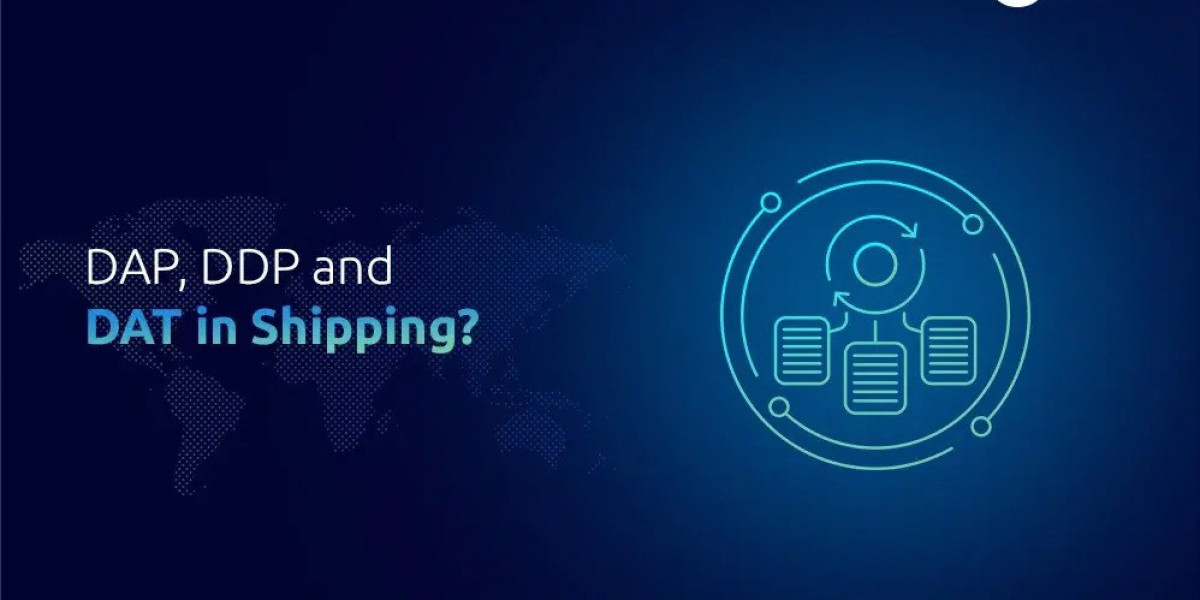In international shipping, understanding various Incoterms (International Commercial Terms) is crucial for businesses, freight forwarders, and logistics providers. These terms define the responsibilities and obligations of buyers and sellers during the transportation process of goods. Among the various Incoterms, DAP (Delivered at Place), DDP (Delivered Duty Paid), and DAT (Delivered at Terminal) are commonly used. These terms specify who bears the cost, risk, and responsibility for the goods during transit. Although they share some similarities, they have distinct differences. This article explores the differences between DAP, DDP, and DAT in shipping .
1. What are Incoterms?
Incoterms are a set of globally recognized standards that define the responsibilities of both the seller and the buyer in the process of shipping goods internationally. Established by the International Chamber of Commerce (ICC), these terms clarify who is responsible for costs such as transportation, customs duties, insurance, and risk during the movement of goods from the seller's premises to the buyer's destination.
2. Overview of DAP (Delivered at Place)
DAP (Delivered at Place) is an Incoterm where the seller assumes the responsibility for delivering the goods to a designated location in the buyer’s country. This location is typically the buyer’s premises or another agreed destination (such as a warehouse, distribution center, etc.). The seller bears all risks and costs involved in transporting the goods up until they reach the agreed destination.
Seller's Responsibilities under DAP:
The seller is responsible for the cost of transportation, loading, and unloading until the goods are delivered to the specified destination. This includes export duties, transportation costs, and freight charges. However, the seller does not handle the import duties or taxes at the destination country.Buyer's Responsibilities under DAP:
Once the goods arrive at the agreed destination, the buyer is responsible for unloading the goods and for handling import duties, taxes, and customs clearance. Essentially, the buyer takes over the risk as soon as the goods arrive at the destination.Risk Transfer:
Risk transfers from the seller to the buyer once the goods are delivered to the agreed destination. The seller is not responsible for unloading the goods or dealing with any charges related to customs clearance.
3. Overview of DDP (Delivered Duty Paid)
DDP (Delivered Duty Paid) is an Incoterm that places the maximum responsibility on the seller. In this case, the seller assumes responsibility for delivering the goods to the buyer’s premises or another agreed location, but unlike DAP, the seller also handles import duties and taxes. The seller must bear all costs involved in transportation, risk, and customs clearance both at the origin and the destination.
Seller's Responsibilities under DDP:
The seller takes full responsibility for the delivery of goods to the buyer’s premises. This includes the cost of transportation, export and import duties, customs clearance, insurance, and any other fees. Essentially, the seller manages the entire shipping process from the point of origin to the final destination. The seller must also ensure that the goods are delivered duty-paid, meaning the necessary taxes and duties are settled before delivery.Buyer's Responsibilities under DDP:
Under DDP, the buyer's responsibility is minimal. Once the goods are delivered to the agreed location, the buyer takes possession of the goods. However, the buyer’s involvement in the shipment process is limited, making DDP a more convenient term for buyers.Risk Transfer:
Risk is transferred from the seller to the buyer only when the goods are delivered to the destination point and are made available for unloading. Since the seller covers all risks, it can be considered the safest option for the buyer.
4. Overview of DAT (Delivered at Terminal)
DAT (Delivered at Terminal) was an Incoterm used in the 2010 version of Incoterms but was replaced by DPU (Delivered at Place Unloaded) in 2020. However, many still refer to it, as it was commonly used in global shipping. Under DAT, the seller is responsible for delivering the goods, and the buyer is responsible once the goods are delivered to a terminal (port or a transport hub) in the destination country.
Seller's Responsibilities under DAT:
The seller bears the responsibility for transporting the goods to the designated terminal in the destination country. This includes the cost of transportation, loading, unloading, and any necessary export customs duties and taxes. The seller’s responsibility ends once the goods are delivered to the terminal.Buyer's Responsibilities under DAT:
Once the goods reach the terminal, the buyer assumes responsibility. This includes handling import duties, taxes, and customs clearance, as well as the further transportation of the goods from the terminal to the final destination.Risk Transfer:
Under DAT, the risk is transferred from the seller to the buyer once the goods are delivered and unloaded at the terminal in the destination country. The buyer bears any further transportation and costs incurred after the goods are at the terminal.
5. Key Differences Between DAP, DDP, and DAT
Cost and Risk Allocation:
- DAP: The seller is responsible for all costs and risks until the goods reach the specified destination, excluding import duties and taxes.
- DDP: The seller bears all the costs and risks, including import duties and taxes, until the goods are delivered to the buyer's premises.
- DAT: The seller is responsible for transporting goods to a terminal in the destination country, and the buyer takes over from there. However, this Incoterm is no longer in use as of 2020.
Import Duties and Taxes:
- DAP: Import duties and taxes are the responsibility of the buyer.
- DDP: Import duties and taxes are paid by the seller.
- DAT: The buyer takes care of import duties and taxes after the goods reach the terminal.
Location of Delivery:
- DAP: Delivery occurs at an agreed place (often the buyer's premises or a warehouse).
- DDP: Delivery happens at the buyer’s premises or another specified location.
- DAT : Delivery occurs at a terminal in the destination country.
6. Conclusion
Understanding the differences between DAP, DDP , and DAT is essential for international trade. While DAP and DDP are similar, with the main difference being the responsibility for import duties, DDP is the most comprehensive term for sellers as it places the maximum responsibility on them. DAT (now replaced by DPU) was beneficial when it came to terminal deliveries, but with DPU's introduction, the buyer now has more flexibility. By choosing the appropriate Incoterm, businesses can better manage risks, costs, and logistical complexities when shipping goods across borders.








